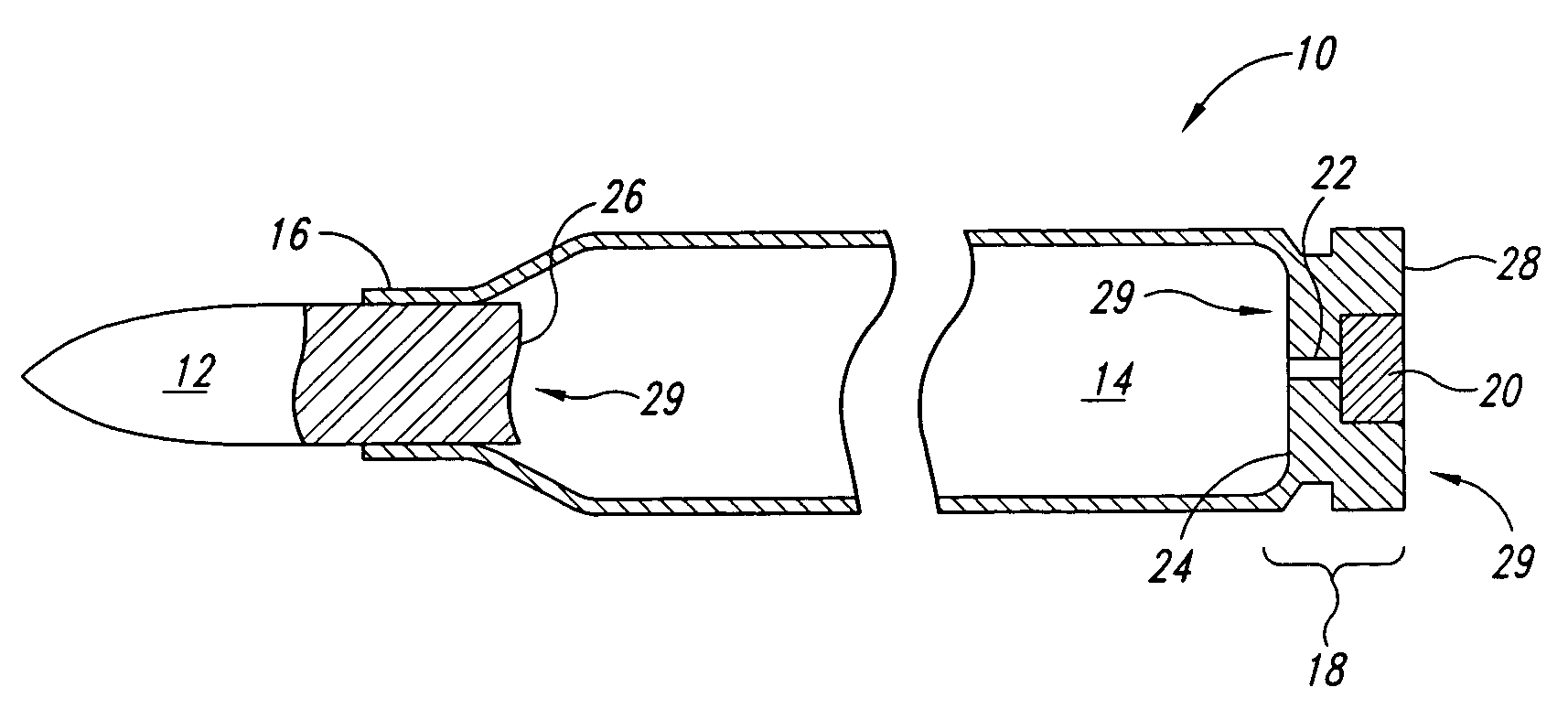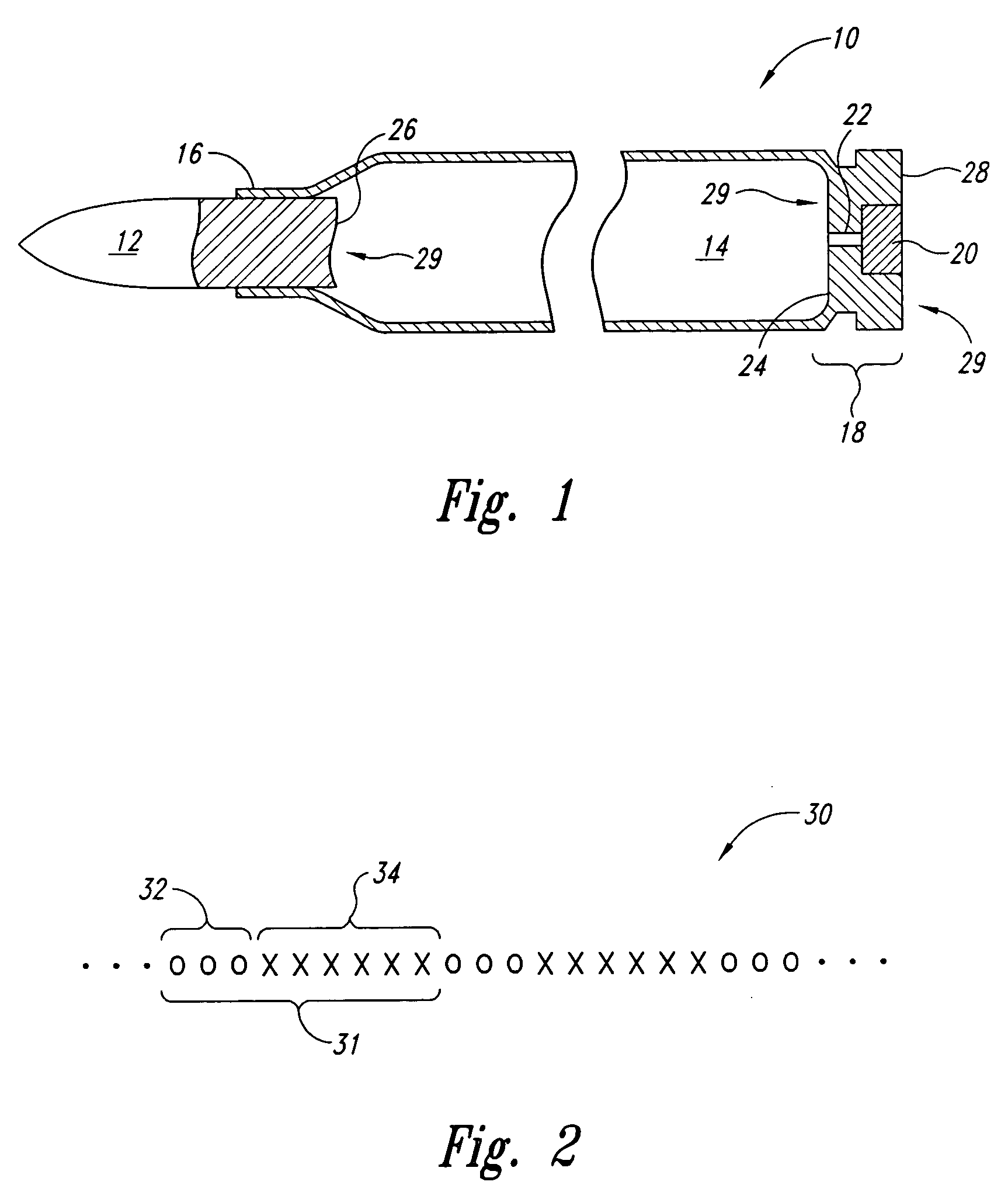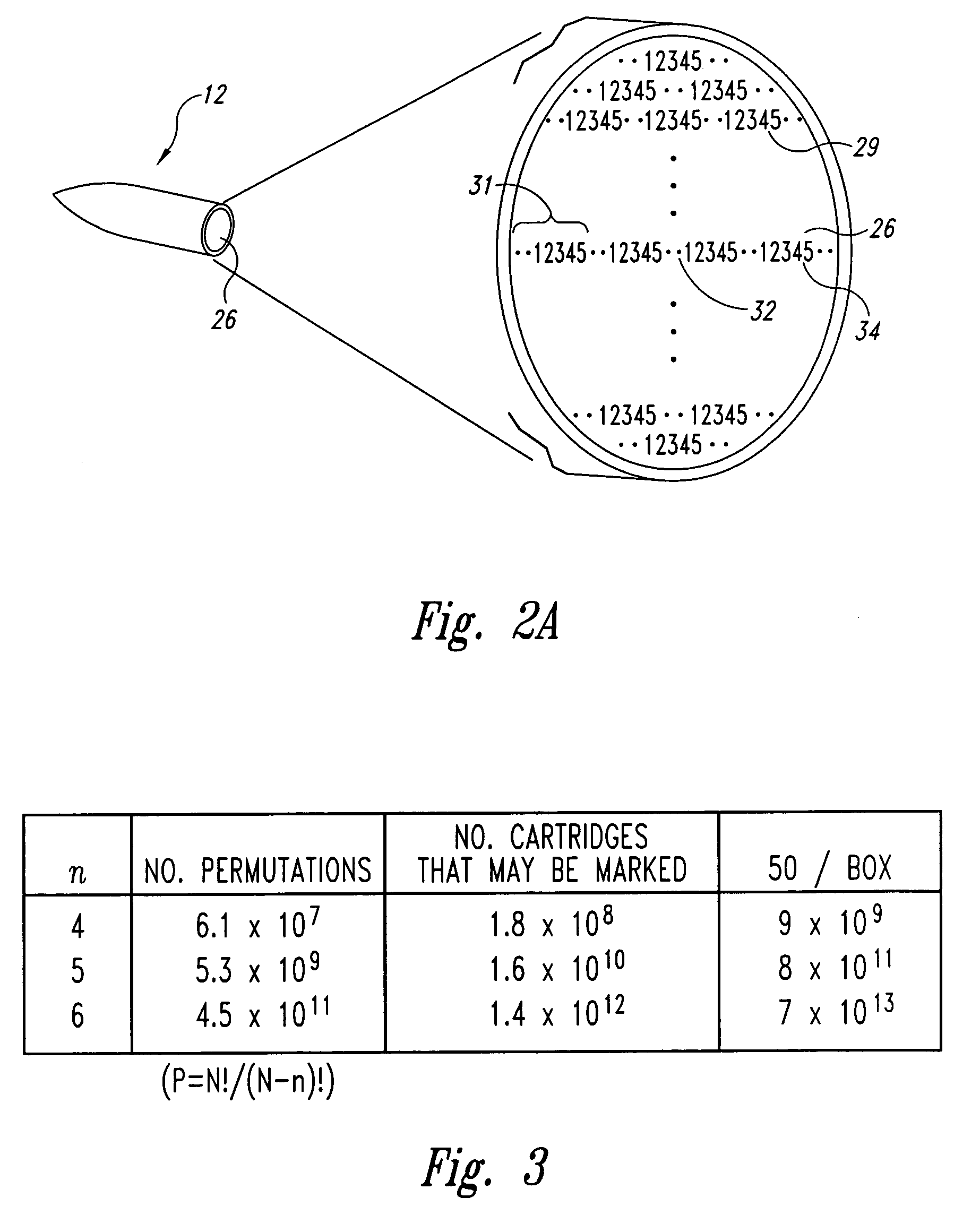Apparatus and method for identifying ammunition
a technology for identification and ammunition, applied in the field of identification of ammunition, can solve the problems of ballistic fingerprinting methods, difficulty in certain methods used to manufacture components of firearms, and inability to identify ammunition
- Summary
- Abstract
- Description
- Claims
- Application Information
AI Technical Summary
Benefits of technology
Problems solved by technology
Method used
Image
Examples
Embodiment Construction
[0016] The present invention is generally directed to the identification of ammunition, and more specifically, to the application of an identifier to ammunition. Many of the specific details of certain embodiments of the invention are set forth in the following description and in FIGS. 1 to 4 to provide a thorough understanding of such embodiments. One skilled in the art will understand, however, that the present invention may be practiced without several of the details described in the following description. Moreover, in the description that follows, it is understood that the figures related to the various embodiments are not to be interpreted as conveying any specific or relative physical dimension. Instead, it is understood that specific or relative dimensions related to the embodiments, if stated, are not to be considered limiting unless the claims expressly state otherwise.
[0017]FIG. 1 is a partial cross-sectional view of a marked cartridge 10 according to an embodiment of the...
PUM
 Login to View More
Login to View More Abstract
Description
Claims
Application Information
 Login to View More
Login to View More - R&D
- Intellectual Property
- Life Sciences
- Materials
- Tech Scout
- Unparalleled Data Quality
- Higher Quality Content
- 60% Fewer Hallucinations
Browse by: Latest US Patents, China's latest patents, Technical Efficacy Thesaurus, Application Domain, Technology Topic, Popular Technical Reports.
© 2025 PatSnap. All rights reserved.Legal|Privacy policy|Modern Slavery Act Transparency Statement|Sitemap|About US| Contact US: help@patsnap.com



